|
|
| |
|
Dear partners, associated partners, and supporters of lifelineMDD,
Summer holidays are almost over, so now is the perfect time to share with you some of our accomplishments in the first half of 2022.

|
|
| |
|
eDUCATION AT THE CORE OF THE BIOSPHERE RESERVE
|
| |
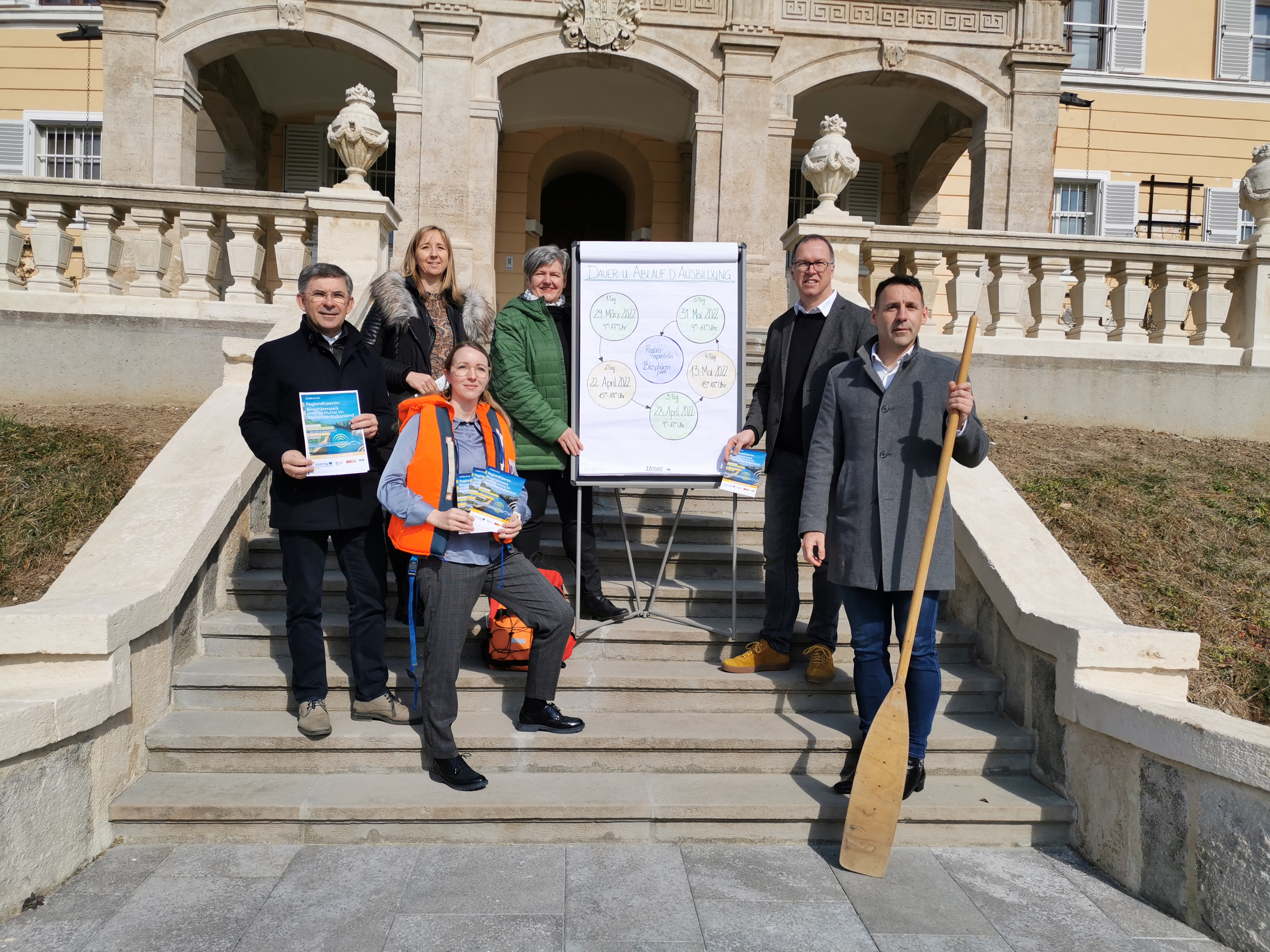 |
| |
|
This January, our Train-the-Trainer Seminar ended. In total, ten trainers from Austria, Slovenia, Hungary, Croatia, and Serbia successfully completed this transboundary training and are ready to transfer their competencies to local educators.
To further raise the quality of educational offers and enable upscaling, didactic materials and tools for integration and use in transboundary trainings have been developed. These consist of the Training Handbook, supplementary materials (like maps and cards), and other tools. They cover topics from ecological connectivity and river dynamics, to climate change and the aims of the biosphere reserve.
Encouraged by the success of previous trainings, Spring provided a perfect opportunity for our trainers to share their knowledge through national trainings. In each of the five countries, 15 to 20 local educators acquired practical knowledge and competencies, using tools and methods presented by education experts and trainers. This will allow them to inspire and support children and youth in observing and studying nature when visiting River'Scools. We hope this will strengthen their interest in the local environment and spark their curiosity about the natural world.
|
|
| |
|
BIRD CENSUS ON THE MURA, DRAVA, AND THE DANUBE RIVERS
|
| |
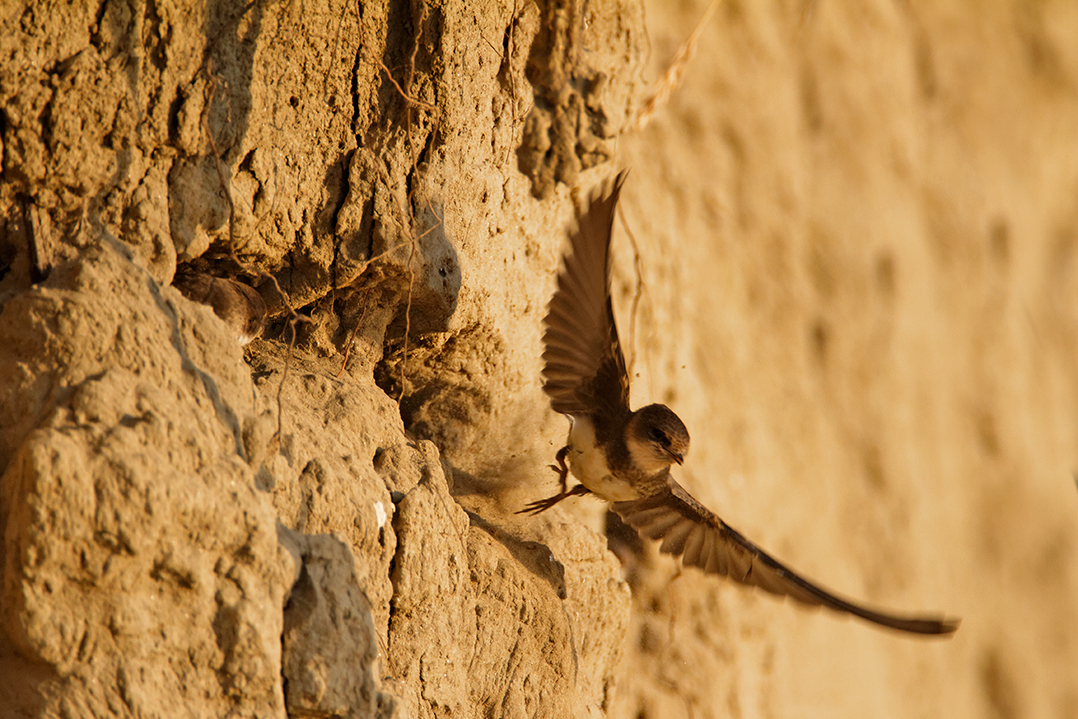 |
| |
|
The lifelineMDD river bird census was repeated between April and June 2022, on the Mura, Drava, and the Danube flowing through Slovenia, Croatia, and Serbia.
The census focused on seven river bird species – indicators for river conditions, as their breeding habitats are closely connected to dynamic rivers. These include the common sandpiper (Actitis hypoleucos), little ringed plover (Charadrius dubius), sand martin (Riparia riparia), kingfisher (Alcedo atthis), bee-eater (Merops apiaster), common tern (Sterna hirundo) and little tern (Sternula albifrons). Exciting observations came from the Slovenian pilot restoration site, where a colony of sand martins and a pair of kingfishers quickly found new homes.
While the census focused on the seven indicator species, our experts observed white-tailed eagles (Haliaeetus albicilla), black storks (Ciconia nigra), white-throated dippers (Cinclus cinclus) and numerous other interesting species.
All that remains now is to gather all the data and include it in the River Bird Breeding Report.
Let's hope that, in the seasons to come, many more birds will find their home in our extraordinary TBR MDD.
|
|
| |
|
PILOT RESTORATION ACTION IN AUSTRIA
|
| |
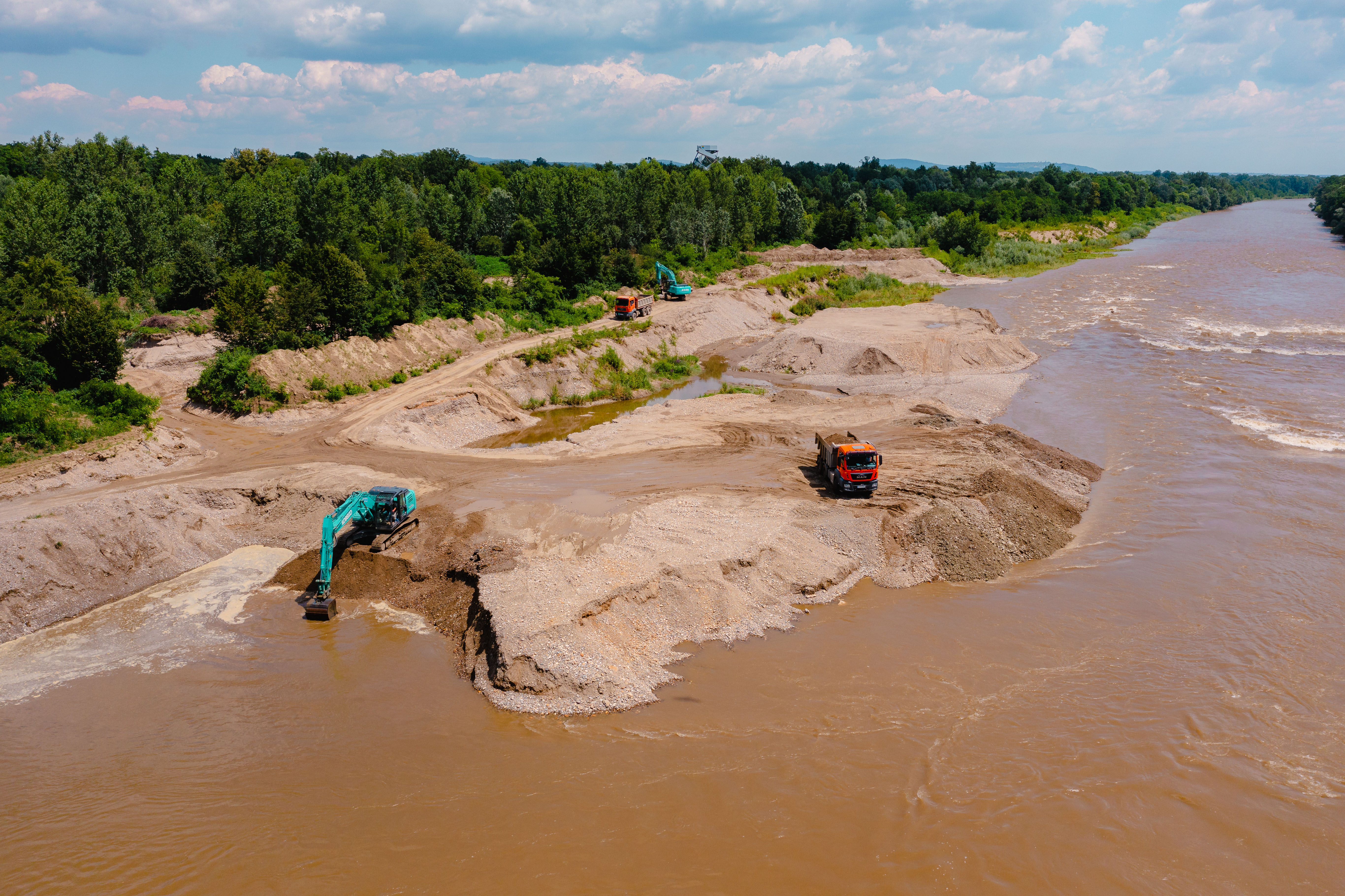 |
| |
|
With a ceremony on June 1, 2022 the pilot restoration action in Austria, Styria has officially started. The goal is to improve water habitats on the Mura River and promote the development of river dynamics, counteracting the progressive deepening of the riverbed.
The restoration action includes the construction of a secondary channel, a groyne and the redesign of bank areas. It is expected that the applied measures will prevent further deterioration of the ecological status of this part of the Mura River.
|
|
| |
|
STUDY VISIT TO FIVE COUNTRIES OF THE TBR MDD
|
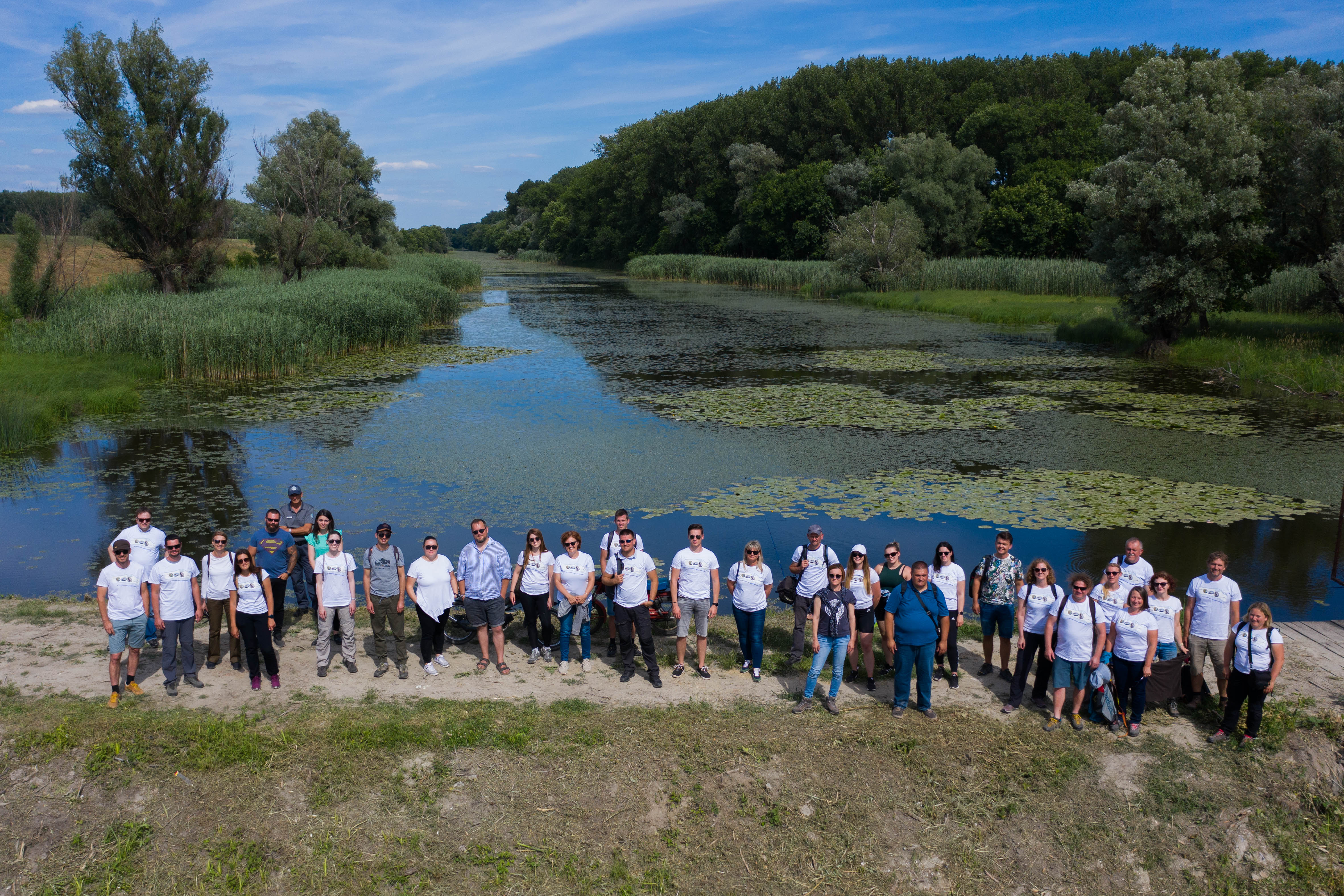 |
| |
|
Long delayed by the pandemic, this May and June project partners embarked on a journey across the Mura, Drava, and the Danube to discover the incredible natural and cultural heritage of the TBR MDD and visit lifelineMDD restoration sites in Austria, Slovenia and Serbia. It was also the first opportunity for all project partners to meet in person and enjoy the collaborative spirit and enthusiasm they all share for this area. The first destination of the tour was Austria. Seeing the development of the Mura river at Mureck and Sicheldorf after the conduction of previous restoration measures rose the expectations for the lifelineMDD pilot restoration site at Gosdorf. During the visit of the pilot measure, the construction works were already ongoing. The visit of Lankóc forest in Hungary gave an impression on how water retention in the floodplain forest and wet meadows can be improved. Day three of the study visit started with a Tamarisk tour in Prelog, Croatia.The grand finale of the first part of this field trip was the visit of the Mura-Drava confluence, as well as the steep bank at Libanovec. Innovative measures were undertaken to conserve this nesting spot for around 1000 breeding pairs of sand martins.
Read more
|
|
|
VOLUNTEERING ACTIONs ALONG MURA, DRAVA and danube RIVERS
|
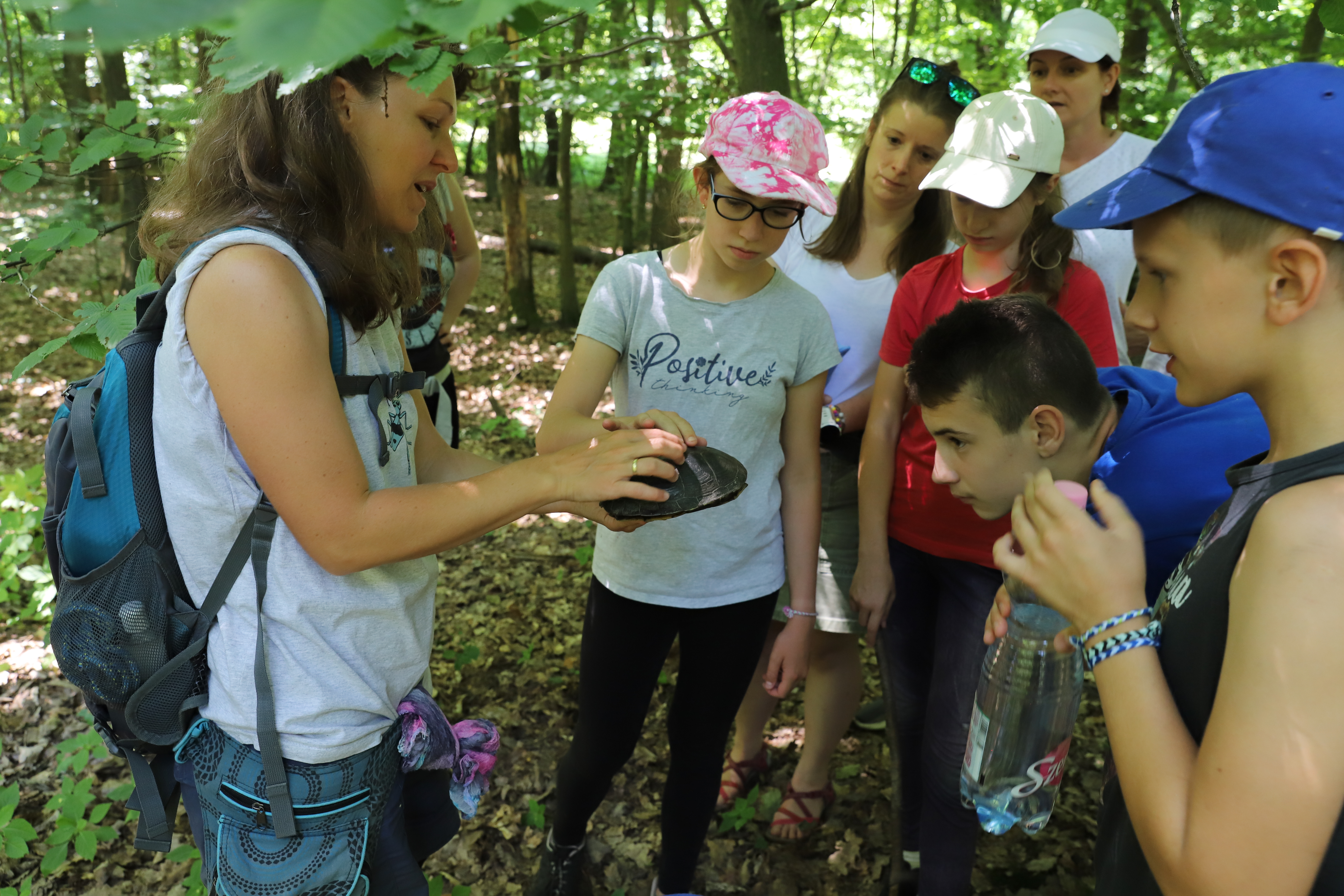 |
| |
|
In spring 2022, a vast number of volunteers from Austria, Croatia, Hungary, Slovenia and Serbia, have been actively involved in nature conservation actions organized by partners RMSO, IRSNC, MVP, JUZDPVZ, WWF HU and INCVP. Actions were diverse - from planting trees in the floodplain forests to the restoration of breeding sites for sand martins. Not only did the actions have a direct positive effect on the protection of certain species in the beautiful 5-country Biosphere Reserve Mura-Drava-Danube, but also helped to raise awareness amongst different volunteering groups, ranging from kids to experts of different fields!
Read more about volunteering actions involving kids along Mura, Drava and Danube
Read more about volunteering actions in Serbian Bačko Podunavlje Biosphere reserve
Read more about the cleaning of the step river bank on the river Drava for sand martins
Read more about tree planting in the biosphere reserve Lower Mura-Valley
Read more about breeding site preparation for sand martins on the Mura river in Slovenia
|
|
|
finished works on pilot site on slovenian mura
|
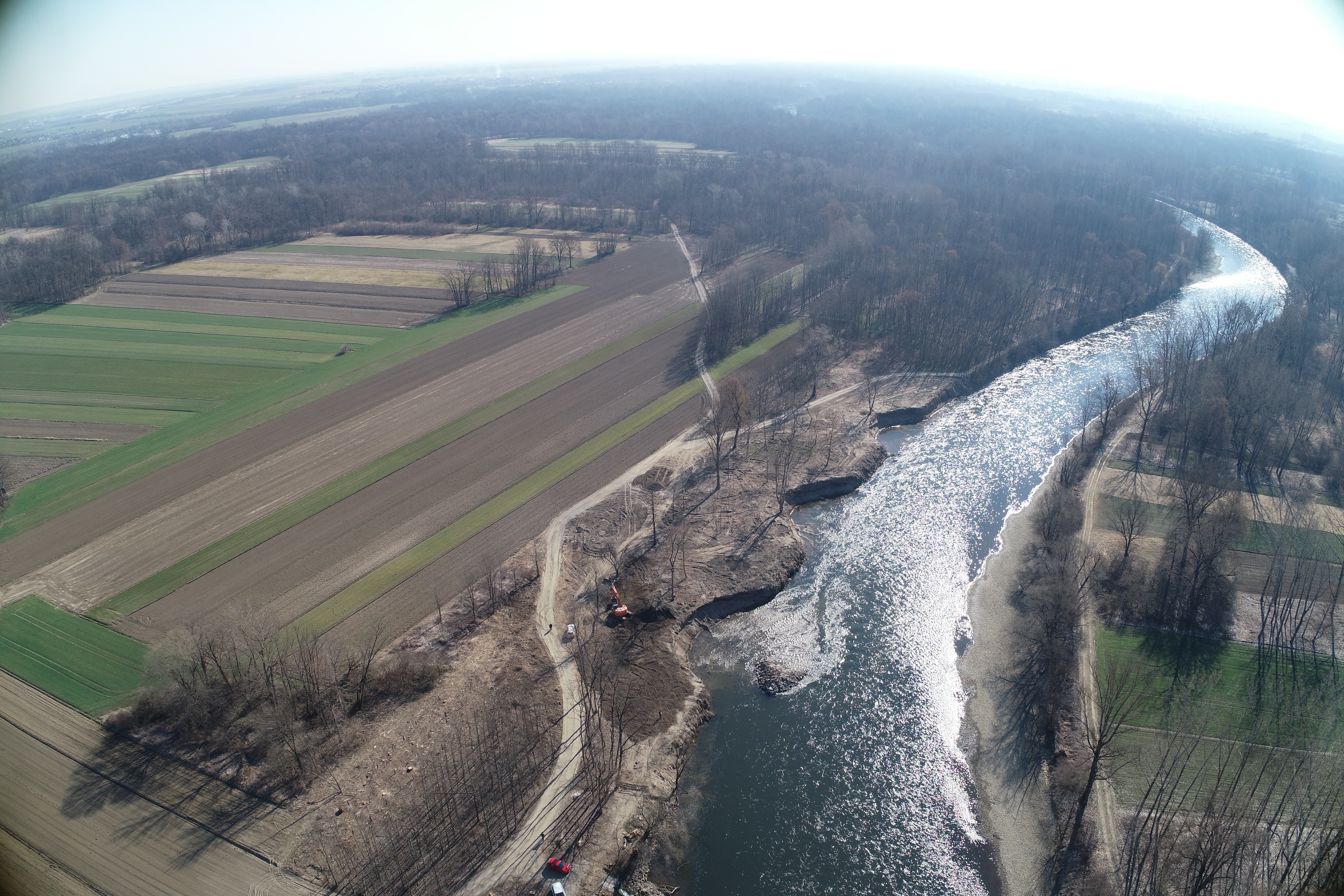 |
| |
|
Project partner - Pomgrad, water management company, started with the field works on the pilot site in second half of January 2022 and finished in March 2022. On a length of 250 m, a small widening on the left bank of Mura river was carried out. First, all permits and consents from the competent services were obtained. This was followed by selective felling of trees in the planned area. The bank protection (rocks) was relocated about 50 m into the hinterland of the river, where it was buried 4 m in depth and will serve as a new bank protection. In the area of the removed riparian protection, three smaller semi-circular areas were excavated to partially restore the river flow dynamics and ease erosion and inflow of gravel into the riverbed. In addition, a new connection path to the existing Mura path was implemented. In the end, a rock structure from wooden pilots and stone in Mura was made, which will direct the water flow and enhance the erosion. The effects of the riverbed widening measure will improve habitats of various animal species including river breeding birds, fishes and other habitat types. The introduction of gravel into the Mura riverbed itself will slow down the deepening of the riverbed and the decline of groundwater, which is not only a key problem for drinking water, but also for the surrounding water bodies and forest habitat types. The purpose of the measure is to restore the natural processes of the Mura, since the changing hydrological conditions in recent decades have greatly endangered the natural and dynamic processes.
|
|
|
|
|
| |
|
If you have received this newsletter, you have been included on one or more of the Danube Transnational Programme/projects postal mailing lists. We are committed to respect and protect the privacy of personal data collected. We regard your personal data as confidential information and will never communicate it to third parties. Your personal data are used mainly for the express purpose of receiving the newsletter. Your mailing details may also be used by the DTP and its projects for information and dissemination purposes strictly related to the programme and its projects. If you prefer not to receive more of this newsletter and your data not to be used for dissemination purposes, you can unsubscribe by sending a reply email.
|
|
|
|
|
|
